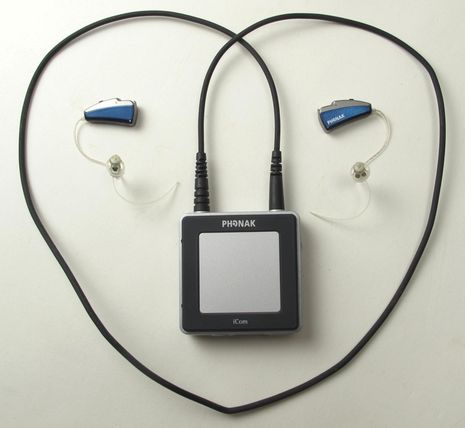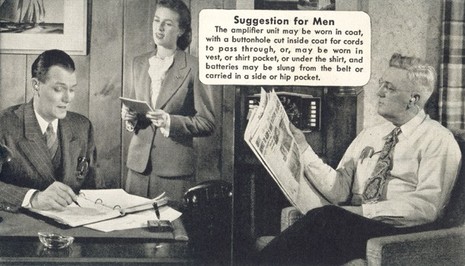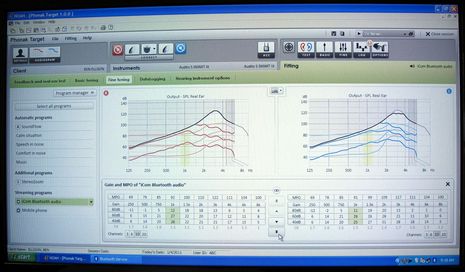My Phonaks; not just aided, augmented!

Yes, I did try to put some "heart" into this photograph of the Phonak Audéo SMART IX hearing aids I've been using since early November (often along with that optional Bluetooth accessory). My only significant symptom was difficulty understanding conversation in noisy places, but when tested it turned out that much of my high frequency hearing was gone. I don't know what caused the damage -- that crazy Led Zeppelin concert?...the stint as engineer on the Gulf supply boat? -- but there's no denying the new sounds I'm hearing through the Phonaks. I still delight in everyday noises like the crinkle of paper, and my music collection has come alive. Plus I'm looking forward to the quiet anchorage sounds I didn't know I was missing, I think that improved hearing is going to help me catch system problems on Gizmo earlier, and I know I'm going to be able to manage cell calls underway better. And it happens that I'm aware of how ineffective hearing aid technology used to be...
My dad started wearing a hearing aid around the time I was born, which is to say soon after spending three years firing howitzers during World War II. He did get to experience the transition from vacuum tubes to transistors -- interesting hearing aid history here and here -- but the diminishing size of the device he wore on his chest (like the gentlemen below) didn't make up for its crude linear amplification. I remember trying his ear piece and hearing how the "aid" mashed all ambient sounds together, regardless of where they were coming from. It didn't remotely compare to undamaged natural hearing. The real revolution in hearing aids has been built on digital sound processing, multiple microphones, wireless communications, and all sorts of other developments...and, frankly, I got pretty emotional when I realized what my father missed...
My Phonaks mainly amplify the sounds I can't hear naturally -- which is why you see the non-occluding ear pieces in the top photo -- and they're listening too. They know, for instance, when I'm in a noisy restaurant and where the sources are, so they can focus on the voice of someone I'm facing while tamping down the crowd. They know too when there's music in the air and they should retune themselves for maximum dynamics. And they can do tricks like transmitting the input from one ear piece to the other so I get to use both ears when I put a phone to one.
But the main reason I joke that I'm not just aided, but augmented, is that iCom Bluetooth accessory I often wear around my neck and paired to my Android phone. With that set up I can listen to music or podcasts while still being able to hear what's going on around me, and when a call comes in -- taken by just tapping the big button on my chest (which can also mute the music) -- I get it in both ears with better fidelity than I've ever had with cell calls. I can even listen to an iPad or another Bluetooth source and still take calls as the iCom can handle multiple devices and give the phone priority.
Is the Phonak system perfect? No. It's wicked expensive and there are areas that could be better, like the dynamic range of the music I hear via the iCom. However, the big cost does include unlimited visits to the audiologist, who in my case is trying to figure out how to improve the sound of that Bluetooth audio program seen below in Phonak's new Target software. And take a good gander at that software. Dr. Schwartzberg can wirelessly fine tune all sorts of Phonak functions while I'm hearing the results live, change what the buttons on the ear pieces control, even set up a remote control (that I haven't tried yet).
So saying that hearing aids today aren't like what your daddy might have struggled with is a huge understatement. But I'm struck by how many people I run into these days who say things like "I've been meaning to get my hearing tested" or "Yeah, my hearing sucks too, and I've been meaning to try some aids." Anyone you know? And there's also the "Well, at least they're so small no one can see them." I actually got those blue ones instead of a fleshier color because I don't think we should be ashamed about such things (a lesson from dad). It turns out they hardly show anyway, but if you see me talking into thin air at a boat show you might realize that I'm seriously accessorized ;-)



 Share
Share
Big diesels, locomotives, paper mill and construction equipment have done a number on my ears. Add me to the list of "should go in and have them tested someday".
How do glasses fit on the ears Ben? Do they have to be wire frames with thin ear sections to share space with the augmenters?
-Doug